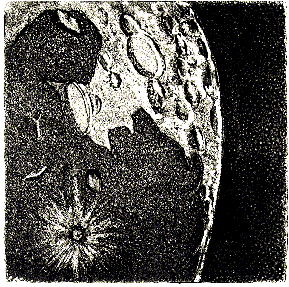Placed in Perspective
To understand why Miyazawa Kenji's popularity has now suddenly expanded, as if he himself were the light from a supernova 63 light years from earth, one must view him in terms of his times and location.
He was fiercely committed to bringing rural Hanamaki up to the level of the more developed regions of Japan. His letters to friends contain detailed scientific information on the use of fertilizers. A few of the last hours of his life, during which he was in considerable pain, were spent in lively discussion with a local farmer about how the rice crop could be improved. As an agronomist, when he deemed his advice insufficient, he went around to farms giving parcels of money to those he had failed to help.
His faith was placed squarely in the consciousness of each and every individual. In Outline Introduction to Agrarian Art, a long piece written in verse form, he tells his wards:
In order to live properly and vigorously
Each and every person shall follow the dictates
Of his own individual consciousness of our galaxy
|
In other words, it is not enough for people to learn the lovely words and go through the motions of the rituals of faith. It is necessary to visualize the universe yourself and find the truth, personally, in it. Then will come the realization that one cannot be happy until all other people in the world are happy. And if necessary one should, like Antares, the red giant in the constellation of the scorpion, allow one's body to burn a countless number of times if it will result in the benefit of humankind.
 This is the key to Miyazawa Kenji's message to the people of this decade: One must climb the slopes of the volcano, oblivious to one's own suffering, and use oneself in a scientific and social experiment; one must make one's way to the sun if necessary to bring back its "black thorns," thereby harnessing its energy for the good of others.
This is the key to Miyazawa Kenji's message to the people of this decade: One must climb the slopes of the volcano, oblivious to one's own suffering, and use oneself in a scientific and social experiment; one must make one's way to the sun if necessary to bring back its "black thorns," thereby harnessing its energy for the good of others.
Characters in his stories do just that, though clearly he was using them--eccentrics with names like Pennen Nolde, Oppel and Gauche--as vehicles for his will, just as his beloved Lotus Sutra was using--and disposing of--him in its design.
When one looks at the Japan of today, itself on the verge of a revolution in consciousness, the cause for the popular attraction to the thoughts and way of Miyazawa Kenji can be seen. Young Japanese in particular have witnessed the insidious unctuousness of an older generation that seems indifferent to the suffering of minorities, the disabled, the abused and the neglected. Official Japan may have the polite phrases and conventional promissory cliches to help people victimized in or by the social system, but it lacks the will to ameliorate their plight.
Miyazawa Kenji had the courage of his convictions, though it must be admitted those convictions were on the odd occasion rather exclusivist and extreme. He put his mind and body on the line; and such an approach has direct appeal to the thinking people of Japan today. In that sense, the Miyazawa Kenji boom itself may be heralding a new era in the reformation of individual consciousness in Japan. Ensconcing oneself in the group and taking refuge there from either awkward praise or fulsome blame may very well be turning into the recessive gene of society's makeup. If this new consciousness, with its emphasis on volunteerism, personal identification with discriminated minorities and individual action, does take hold, then the forced rhetoric of old-style Japanese "compassion" may be out. Taking a stand and acting upon it, a lifestyle preached by Miyazawa Kenji, may just be coming in. Such is his legacy in the context of an entirely different era.
His images are written in particles of light. And if human beings are capable of running a relay with light itself as the baton, we can grasp that baton, hold onto it--if only for a brief moment or two--and pass it on, gently and without fanfare, to the next -person.
|



